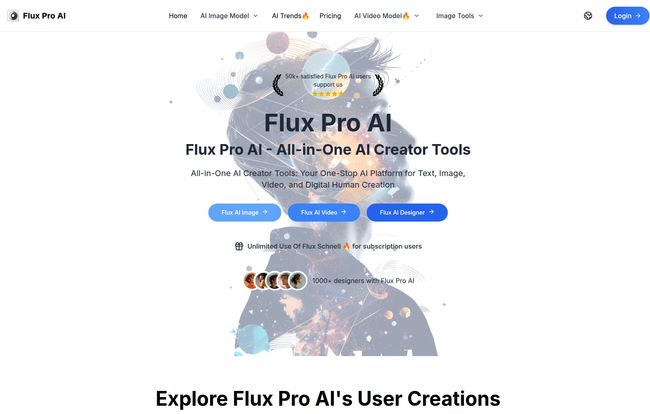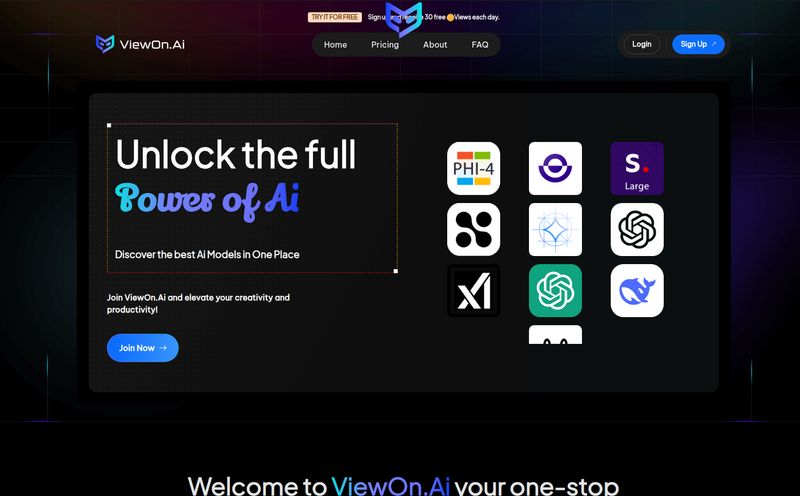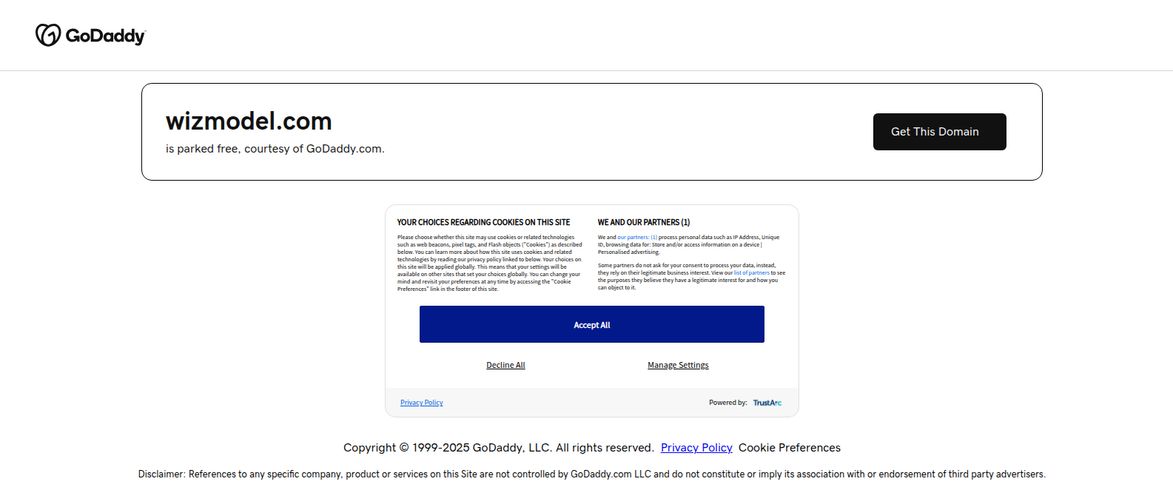If you’re like me, your desktop is a graveyard of half-finished projects, your browser has about 97 tabs open, and you've spent more time than you’d care to admit trying to coax a decent image out of an AI. You know the drill. You type a prompt into Midjourney, go make a cup of coffee, come back, and… it’s almost right. Except for the six fingers on that hand. Or you're wrestling with a local install of Stable Diffusion that’s making your GPU sound like a jet engine preparing for takeoff.
The AI art scene is an absolute arms race right now, and frankly, it can be exhausting. Every week there’s a new “game-changer.” So when I first heard about Flux Pro AI, I’ll admit I was skeptical. Another contender in an already crowded ring? But the whispers I heard were different. They weren't just about quality; they were about speed. Blistering, unbelievable speed. So, I cleared a few of those 97 tabs, took a deep breath, and decided to see if the hype was real.
So What Exactly is Flux Pro AI?
Flux Pro AI is the brainchild of a team called Black Forest Labs, and it's their powerful entry into the text-to-image world. It’s not just one model, but a suite of them, including FLUX.1 Pro for top-tier quality and FLUX.1 Schnell for, well, schnell means fast in German, and they aren't kidding. The platform is designed to generate photorealistic images, complex artwork, and concept designs directly from your text prompts. But it also does image-to-image, can reverse-engineer a prompt from an image, and even has an AI Designer and video generation tools.
Their big, bold claim? They outperform giants like Stable Diffusion 3 and Midjourney in both speed and image quality. That's a bold move, Cotton. Let's see if it pays off.
My First Impressions: A Speed Demon with an Eye for Detail
Logging into Flux Pro AI for the first time is a breath of fresh air. There's no need to join a Discord server or navigate a labyrinth of channels and slash commands. It's a clean, straightforward web interface. You see a text box, you type what you want, you hit 'Generate.' That’s it. For anyone who's felt the friction of other platforms, this simplicity is a huge win right off the bat.
The User Interface is Deceptively Simple
I can’t stress this enough. The UI is clean. It's intuitive. You have your main modes—Text-to-Image, Image-to-Image, Designer—and it’s all laid out logically. You're not hunting for settings or trying to remember obscure parameters. This focus on user experience tells me they're thinking about actual creators and professionals, not just hobbyists who enjoy tinkering.
But the Output Quality... Wow.
So I started with my usual test prompt, something with complex lighting and textures:
photorealistic macro shot of a single dewdrop on a vibrant purple orchid petal, cinematic lighting, early morning mist.
I hit enter, and before I could even take a sip of my coffee, four options appeared. And they were good. I mean, really good. The lighting felt natural, the textures were crisp, and there were no weird AI artifacts. The speed was jarring. It’s like they’ve somehow skipped the “rendering” part and just pull the finished image from a magic hat. It genuinely feels faster than anything else I’ve used in this space.
Exploring the Flux Pro AI Toolkit
Beyond the basic text-to-image, Flux Pro has a few more tricks up its sleeve that are worth talking about.
- Text-to-Image & Image-to-Image: This is the platform's bread and butter. You can generate from scratch or upload your own image as a starting point, guiding the AI with a prompt to modify or reimagine it. Standard stuff, but executed brilliantly.
- Image-to-Prompt: This is a fantastic little feature. Ever see an image and wonder what magical incantation of words created it? You can upload an image, and Flux Pro AI will analyze it and give you a descriptive prompt. It's an incredible tool for learning how to craft better prompts.
- AI Designer: This feature lets you integrate new elements into existing images. Think of it as a super-powered, AI-driven photoshop tool. You can add objects, change backgrounds, or tweak compositions in a way that feels pretty intuitive.
- AI Video Generation: Yes, it can do image-to-video. You give it a starting image and a prompt, and it animates it. Now, a word of caution here: this feature is a credit hog. It eats up your credits like nobody's business, so you'll want to use it sparingly unless you're on a beefy plan. It's cool, but it's the most expensive part of the toolkit.

Visit Flux Pro AI
Let's Talk Turkey: The Flux Pro AI Pricing Structure
Okay, this is where things get a bit more complex. Flux Pro AI runs on a credit-based system, which is common in this space. How much an image costs depends on the model you use. The super-fast 'Schnell' model is cheap, while the high-quality 'Pro' model costs more credits. Here's how the plans break down, and I have to say, I'm a big fan of the flexibility here.
| Plan | Price | Key Features |
|---|---|---|
| Free Plan | $0/month | 5 daily credits, slow generation, no commercial license. Great for a test drive. |
| Starter Plan | $9.90/month | 400 credits/month, unlimited use of the fast models, commercial license. |
| Premium Plan | $15.90/month | 800 credits/month, all the same perks. This seems like the sweet spot for regular users. |
| Advanced Plan | $22.90/month | 1500 credits/month for power users. |
| One-Time Plans | $20 or $50 | 400 or 1000 credits with no subscription. I love this option. |
And right now, it looks like they have a Summer Sale going on, so these prices might be even better for a bit. The existence of one-time credit packs is a massive plus for me. I'm tired of subscription fatigue, and for project-based work, being able to just buy a block of credits is perfect.
The Good, The Bad, and The Credit-Based
No tool is perfect. After spending a good amount of time with it, here's my honest breakdown.
What I'm really impressed by is the raw speed and quality. The combination is just unmatched right now. The clean UI and the fact that you get a commercial license with paid plans are huge selling points for anyone looking to use this for actual work. The open-source options are also a nice nod to the community.
On the flip side, the credit system, while flexible, can be a bit of a mental calculation. You're always aware of your credit balance, especially when using the more powerful models or experimenting with video. Speaking of video, it's just too credit-intensive for casual use at the moment. My other small gripe is the current lack of a mobile app. In a world where I get ideas on the go, being tied to a browser is a slight limitation. Hopefully, that’s on their roadmap.
Flux Pro AI vs. The Titans (Midjourney & Stable Diffusion)
So, the million-dollar question: should you switch? If your main priorities are speed and photorealism out-of-the-box, my answer is a resounding yes, you should at least try the free plan. Compared to Midjourney, the lack of a Discord interface makes Flux Pro AI feel like a professional tool, not a community project. The speed is noticeably faster for comparable image quality.
Compared to Stable Diffusion, it’s a different ballgame. SD offers ultimate control if you're willing to put in the work with local installs, custom models and LoRAs. But Flux Pro AI gives you 95% of that high-end quality with about 5% of the effort. It’s for people who want to create, not tinker.
Frequently Asked Questions
- Can I use Flux Pro AI for free?
- Yep! There's a free plan that gives you 5 credits every day. It's a bit slow and doesn't include a commercial license, but it's perfect for seeing what the tool can do.
- Are the images I generate mine to use commercially?
- If you're on any of the paid plans (including the one-time credit packs), yes. You get a commercial license to use the images you create for your projects.
- What's the difference between the AI models like Schnell and Pro?
- Think of it as a trade-off between speed and quality. FLUX.1 Schnell is incredibly fast and costs very few credits (just 1 per image). FLUX.1 Pro is slower and costs more credits (4 per image), but it delivers the absolute highest quality and coherence.
- Is Flux Pro AI difficult to learn?
- Not at all. I'd argue it's one of the easiest and most user-friendly AI image generators on the market right now. If you can type a sentence, you can create an image.
- Does Flux Pro AI have a mobile app?
- As of now, no. It's currently a web-based platform, so you'll need to use it in your browser on a desktop or mobile device. A dedicated app would be a great future addition.
- Are there any tutorials for getting started?
- The platform is quite intuitive, but their website does have a 'How to Use' section that covers the basics to get you up and running quickly.
Final Thoughts: Is Flux Pro AI Worth Your Time?
After a healthy dose of skepticism, I'm genuinely impressed. Flux Pro AI feels like a significant step forward, not just an imitator. It’s carved out a clear identity for itself by focusing on two things that matter immensely to creators: workflow speed and final image quality. It's not trying to be a social platform or a complex engine for developers; it's a workhorse for artists, designers, and marketers who need stunning visuals without the headache.
Is it the ultimate AI image generator that will end the arms race? Probably not. But for now, it's earned a permanent spot in my browser's bookmark bar. If you’ve felt the frustration of slow renders and quirky interfaces, you owe it to yourself to give Flux Pro AI a shot. You might just be surprised at how fast the future is arriving.



